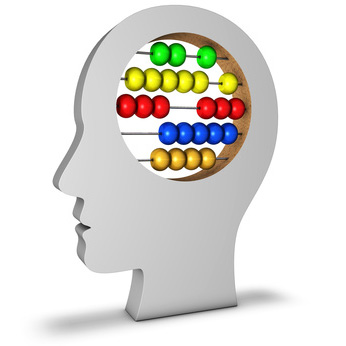
Remarkable reversible numbers

Some tricks to help you with your mental arithmetic when you're dealing with reversible numbers.
Reversible numbers, or more specifically pairs of reversible numbers, are whole numbers in which the digits of one number are the reverse of the digits in another number, for example, 2847 and 7482 form a reversible pair. Reversible pairs prove interesting because of the unexpected way in which they allow addition and subtraction to be carried out — a way that facilitates mental arithmetic. This is best illustrated with a couple of examples.
Addition
Take a reversible pair such as $13$ and $31.$ The addition of these two numbers can in this case be performed quite simply by taking the sum of the two digits and multiplying it by 11: $$ 1+3 = 4 \mbox{ and } 4 \times 11 = 44, \mbox{ so } 13+31 = 44.$$ Let's try this again with the pair $82$ and $28:$ $$ 8+2 = 10 \mbox{ and } 10 \times 11 =110, \mbox{ so } 82+28 = 110.$$Subtraction
Subtraction is carried out in a similar fashion, except the difference between the two digits is taken and the result multiplied by 9. For example, in subtracting $13$ from $31$ we have $$ 3-1 = 2 \mbox{ and } 2 \times 9 = 18, \mbox{ so } 31-13 = 18.$$ Similarly, for $28$ and $82$ we have $$ 2-8 = -6 \mbox{ and } (-6) \times 9 = -54, \mbox{ so } 28-82 = -54.$$ It works like magic. But why?The underlying theory
Any positive whole number $a$ which is less than $100$ is written with two digits $x,y$: $$a=10x+y.$$ Its reverse is therefore $$b=10y+x.$$ For example, if $a=82$ and $b=28,$ we have $x=8$ and $y=2:$ $$82 = 10 \times 8 +2 \mbox{ and } 28 = 10 \times 2 + 8.$$ The sum of $a$ and $b,$ then, is $$a+b = (10x+y) + (10y+x) = 11x + 11y = 11(x+y).$$ Similarly, their difference is $$a-b = (10x+y) - (10y+x) = 9x + 9y = 9(x-y).$$ The result also holds if $a$ is a number that ends in $0,$ such as $a=10.$ In this case, $b=01 = 1.$Triple digit numbers
Does something similar work for triple digit numbers? We can use the same method as above to derive the corresponding equations. A positive whole number $a$ with the digits $xyz$ is equal to $$a = 100x + 10y+z.$$ Its reverse will therefore be $$b = 100z+10y+x.$$ For the sum we get $$a+b = (100x + 10y+z) + (100z+10y+x) = 101(x+z) + 20 y.$$ For the difference we get $$a-b = (100x + 10y+z) -(100z+10y+x) = 99(x-z).$$
The general case
Can we extend these results to numbers with more digits? In the case of a four-digit reversible number $xyzw$ the equations become $$a+b = 1001(x+w)+110(y+z)$$ and $$a-b = 999(x-w)+90(y-z).$$ For a general $n$-digit number, written as $x_1x_2x_3...x_n$ the equations are $$a+b = 10^{n-1} \left(x_1 + x_n\right) + 10^{n-2}\left(x_2+x_{n-1}\right) + 10^{n-3}\left(x_3+x_{n-2}\right) + ...+\left(x_n+x_1\right)$$ and $$a-b = 10^{n-1} \left(x_1 - x_n\right) + 10^{n-2}\left(x_2-x_{n-1}\right) + 10^{n-3}\left(x_3-x_{n-2}\right) + ...+\left(x_n-x_1\right).$$This looks a lot more complicated. There are limits, then, as to how far we can go in finding the sum and difference of two reversible numbers this way. But that does not detract from its usefulness within those limits!
Further reading
Find out more about reversible numbers in Michael P. Greaney's Little book of reversible numbers.
About the author

Michael P. Greaney is a writer with particular interests in astronomy and mathematics. Apart from the Little book of reversible numbers, he has written articles for a number of astronomical magazines and was a contributing author to the book Observing and Measuring Visual Double Stars (Springer, 2012).
Comments
Anonymous
I've been trying to think of a method to decompose a number into a number which, added to its reverse, equals that first number. For example 685 decomposes into 392+293, but I only know that because I started with 392 arbitrarily. Do you or anyone know of a quick sure method to start with a number like 685 and find 392?
Chris G
Anonymous
Firstly, not all numbers have reversible components, e.g. 125.
Secondly, this solution applies only when the components have three digits, although the number itself could be as high as 1998 (= 999 + 999).
Let m be the number you want to decompose into its reversible components.
Let x and y be the components, then
x + y = m
The difference between two, three-digit numbers is evenly divisible by 99. So,
x – y = 99k
where k is some integer 0 … 9. It is the difference between the first and last digit of the larger component, as described in the above article.
Now,
y = m – x
x = 99k + y
On substituting m – x for y in the second equation and then adding x to both sides gives
2x = 99k + m
Or
x = (99k + m) / 2
The solution can be found by trying zero and even numbered values of k when m is even and odd numbered values m is odd.
There can be more than one solution to the problem. 685, for example has 3 solutions, namely when k = 1, 3 and 5. This means 685 has four reversible components: 392, 491, 590 and their respective reverses.
Michael Greaney
Anonymous
for your reply. However while it certainly added to my understanding of the topic, your method yielded no solution for any number that I pulled randomly out of the air, such as 341, 724, 651, 873 (like your example of 125). No doubt I'd have eventually hit on one, but it leads to the questions: what proportion of 3-digit numbers are decomposable this way, and is there a way of knowing in advance?
Interesting that my example 685 has three reversible components (not four as you say unless I've left something out), but applying your formula to it also yields 689 and 788 for k = 7 and 9. These are the two the 3-digit Lychrel (candidate) seed numbers, which I'm also interested in.
Also 651/2 = 325.5, which reversed and added a couple of times gives 651.156, which could be regarded as a fair approximation, would you say? Maybe that's the beginning of an alternative method.
Chris G
Anonymous
My last sentence missed out a crucial stage in deriving a reversible pair from 651.
651/2 = 325.5 as I said, then reverse and add that result once to get 331.023. Add that to its reverse, and you get back not exactly to 651 but to 651.156, which I'm suggesting is an acceptable approximation. So 331.023 and 320.133 is the reversible pair I got by decomposition from 651.
There are plenty of similar examples, in four digit numbers as well.
Another clarification, by "know in advance" I meant is there way of deciding in advance whether or not a given three digit number has a solution before starting the procedure you describe?
Anonymous
My apologies. There are three, not four, reversible components of 685.
There are only 95 numbers from 000 to 989 that are the sum of two, three-digit reversible numbers, i.e. about 9.6% of all the numbers. (989 is the largest three-digit number that can be decomposed into two reversible numbers.)
Of those that can be so decomposed, the first and last digit have a difference of zero or one and the middle digit is evenly divisible by two.
Hope this helps.
Michael Greaney
Anonymous
Have you tried 196?
Haider
The difference of a two digit number and the number obtained by reversing its digits is 5 times the sum of the digits of either number.
what is the sum of the two digit number and its reverse?
the answer is 99
.how ?
Johnboy8000
If you take the number 258,741 and you double it you get 517,482. That number has the same digits as the first: 1, 2, 4, 5, 7, and 8.
Does anyone know if there are other numbers that have the same digits when doubled? I haven't found any yet.
Anonymous
You are dealing with a Cyclic Numbers in your given Example. Like you are mentioning 258,741 so, Here are some interesting properties of Cyclic Numbers:
2+5+8+7+4+1=27 (These always equals to 27, Sequence of them are 1,4,2,8,5,7 that can be obtain from *1 devide by 7*)
258+741=999 (Sum of Left 3-Digits and Right 3-Digits always equal to 999)
25+87+41=153 (It should be 99, The digits are out of sequence), So It can be corrected to prove the *Numbers are from Cyclic Numbers* by Overlap Addition and its Reverse Digits of each 2-Digits Integers,
Like: 153=15+53=68, so 68+86=154=15+54=69, so 69+96=165=16+65=81, so 81+18=99 (*Hence Proved)
So Answer to your query is 142857 and you double it you get 285,714. Every couple of numbers that has Cyclic Properties and consists of 1,2,4,5,7,8 could be good candidates.